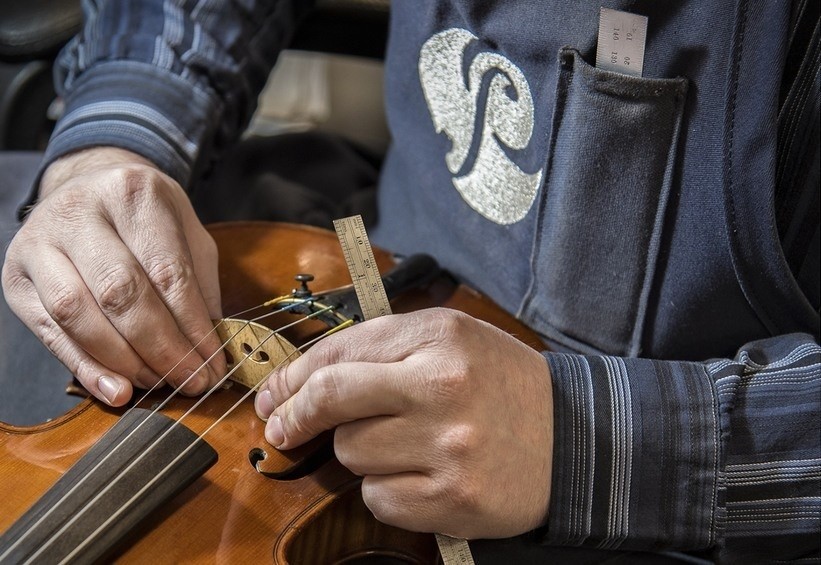Change of Seasons…
The man standing in front of me has both worry and frustration taking turns crossing his face.
“We just bought this violin a few months ago, we spent a lot on it and my daughter is very careful with it. She says she didn’t do anything…” the unspoken accusation hangs in the air as other customers shift uncomfortably in line while also straining to hear the outcome.
“Well, let’s see what we have here.” I open the case and lift the blanket and rosin-rag that have been tucked around the violin with obvious care. Inside, the strings are splayed in disarray and the bridge is lying off to one side. A sorry sight indeed, but there is no evidence of foul play.
I smile and say, “You daughter is correct, she did nothing wrong. The humidity in your home merely dropped below the 30% range when the heat came on and the pegs shrank and turned loose. We’ll have you fixed up in a jiffy!”
Relief and confidence return to the assembled clients as the gentleman takes his seat to wait for the magic to occur. Crisis averted.

This brings up a good point. Winter violin maintenance practices are crucial.
Humidity control is a constant battle, especially in the D.C. area, for personal comfort and the continuing adjustment and performance quality of stringed instruments. A minimum of 30% (40% is better) relative humidity is necessary to prevent cracking and other sound adjustment issues on violins, violas, and cellos. When the heat turns on in your home, the very process of warming the air dries it out, and instruments need to be protected.
Case humidifiers, such as the Boveda Humidification Starter Kit, will help keep the bow hair from shrinking and the pegs from coming loose, but for dependable protection in the cold season, we recommend using a Dampit humidifier. This is a smallish green rubber tube with holes and wick inside that slowly evaporates its contents in the interior of your instrument. Try to make a habit of re-moistening it every day during the winter months.
Winter violin maintenance practices, such as maintaining a consistent environment, alongside the use of humidifiers, will help keep your violin, viola, or cello from cracking and developing open seams.
Check out our stringed instrument care guide for further reading.
More related reading: “Keep Your Instrument Fit: 5 Common Problems & How to Prevent Them” by our workshop manager Christopher Jacoby for Strings Magazine.
L. Dalton Potter
